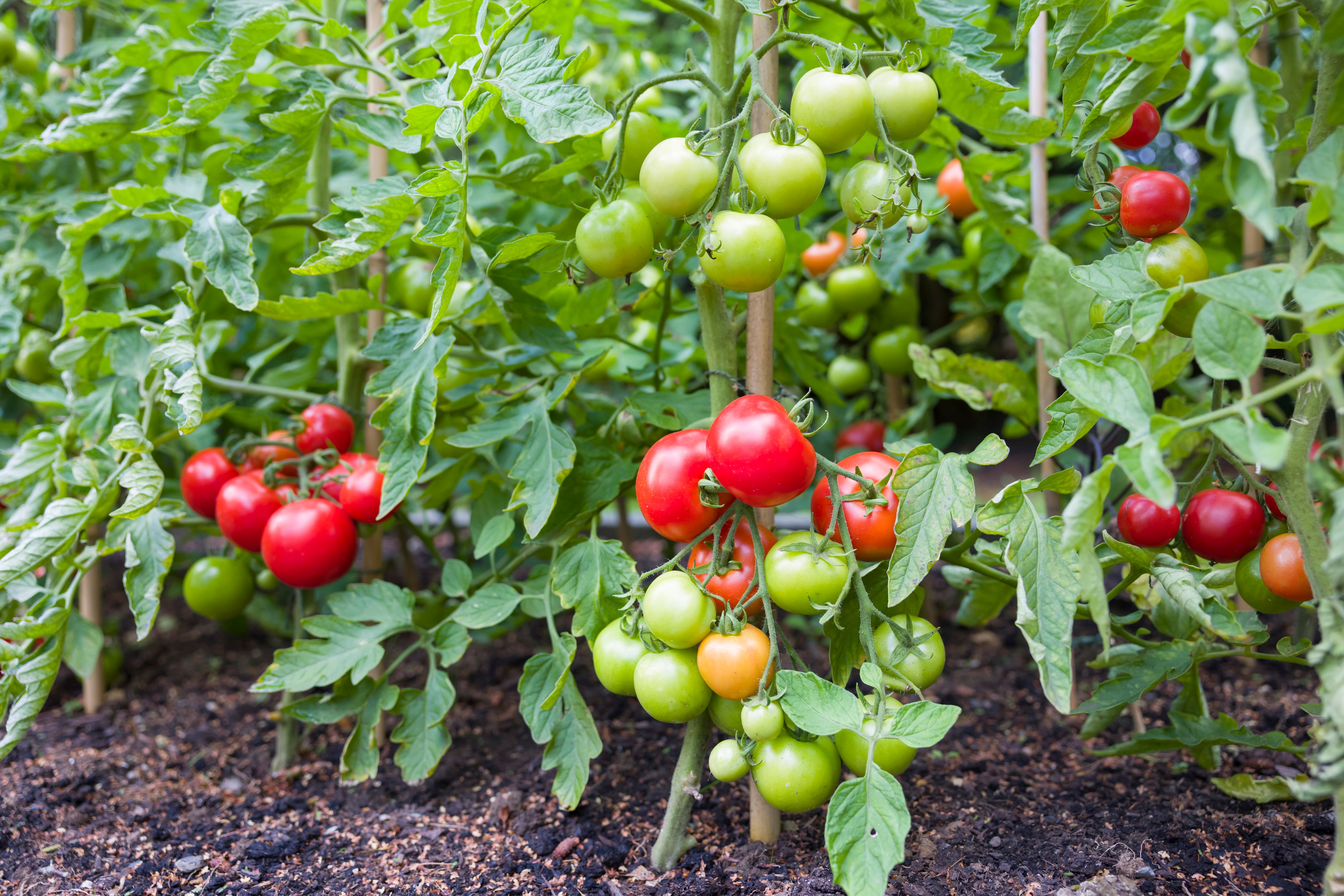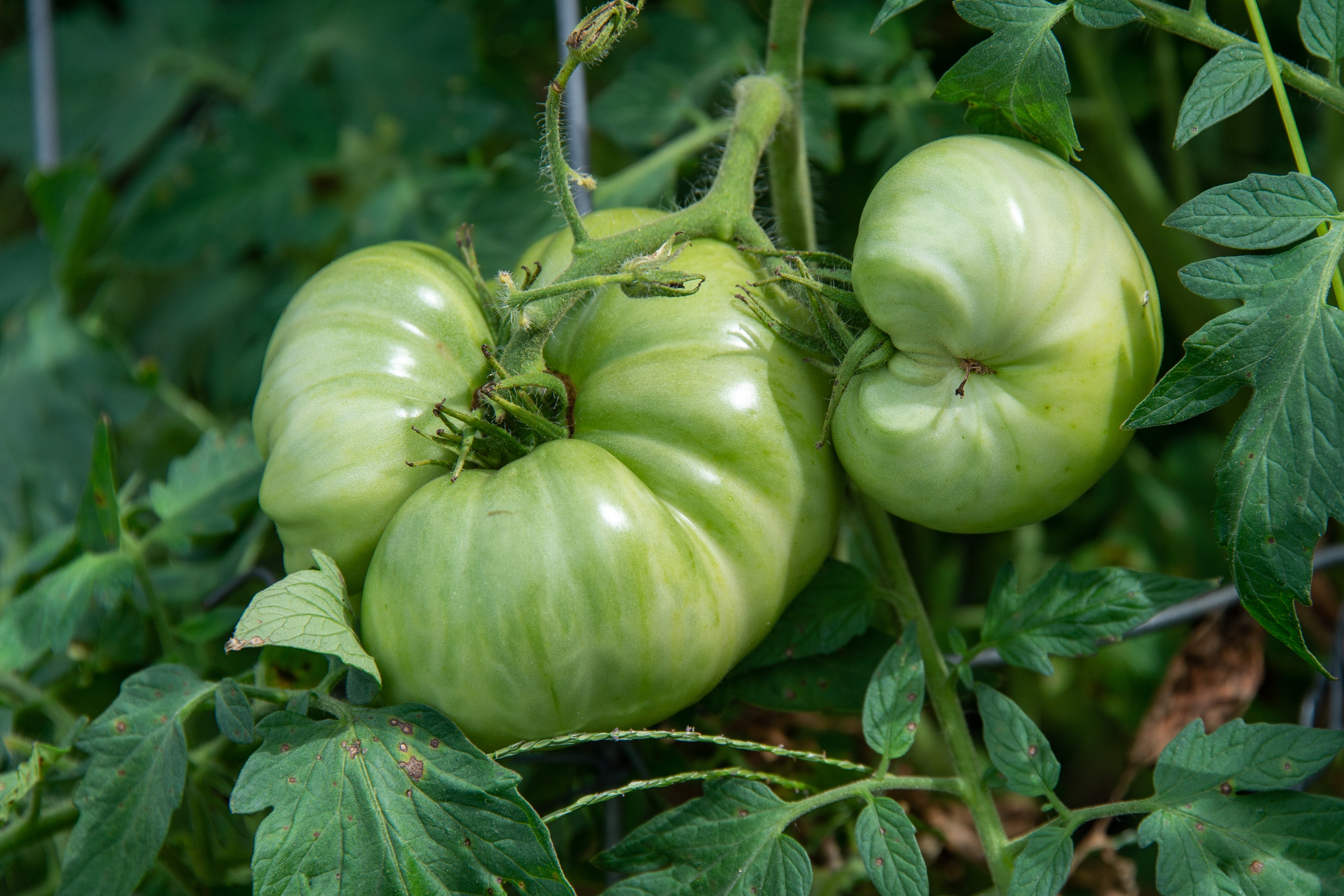The Independent's journalism is supported by our readers. When you purchase through links on our site, we may earn commission.
Is there something wrong with your tomato plants?
Learning to recognise tomato diseases and pests can help you make better decisions in the future, writes Margaret Roach

Your support helps us to tell the story
From reproductive rights to climate change to Big Tech, The Independent is on the ground when the story is developing. Whether it's investigating the financials of Elon Musk's pro-Trump PAC or producing our latest documentary, 'The A Word', which shines a light on the American women fighting for reproductive rights, we know how important it is to parse out the facts from the messaging.
At such a critical moment in US history, we need reporters on the ground. Your donation allows us to keep sending journalists to speak to both sides of the story.
The Independent is trusted by Americans across the entire political spectrum. And unlike many other quality news outlets, we choose not to lock Americans out of our reporting and analysis with paywalls. We believe quality journalism should be available to everyone, paid for by those who can afford it.
Your support makes all the difference.Those spots on the foliage of your beloved tomato plants may be slightly panic-inducing, and the recent humid, wet weather isn’t helping. And misshapen or otherwise disfigured fruit can be frustrating, too.
But there’s a silver lining: think of it all as a beginner’s course in tomato diseases and disorders – one that will eventually make you better at growing tomatoes.
“If you can learn to recognise certain diseases and pests this year,” says C. Andrew Wyenandt, an extension specialist in vegetable pathology at the Rutgers New Jersey Agricultural Experiment Station, “you can make better decisions next year and get better results.”
Tomato school, here we come.
The lesson plan includes diseases that are biotic in nature – caused by a fungus, bacterium or virus. Disorders of an abiotic nature are covered, too – where environmental stressors cause unusual responses on fruit, including cases where fruit fails to set (usually because temperatures exceed 32C or fall below 13C, interfering with pollination, although overfertilising can also be a cause).
Oh, and pests.
Some, like the voracious tomato and tobacco hornworms – native moth caterpillars that feed on solanaceous crops – make themselves known in dramatic fashion, devouring foliage from entire stems in no time, and leaving droppings behind for good measure.
Seeing spots
Avoid planting tomatoes and their relatives – aubergines, potatoes or peppers – in the same place year after year
Often the stress of developing a heavy fruit load can be the tipping point, disposing a vigorously growing plant to fungal foliar issues, says Kristian Holmstrom, who runs Rutgers’ vegetable integrated pest management programme for northern New Jersey.
Two of the most common fungal diseases may, at first glance, look similar – and you may even have them both: Alternaria, or early blight, and Septoria leaf spot. This is where that hand lens is useful again, to distinguish between the two.
Early blight moves from the bottom up, starting with the lower, or oldest, leaves, which first show dark-coloured lesions and then may turn yellow, dropping prematurely. As the spots enlarge, distinctive concentric rings develop within them. Eventually, early blight can infect plant stems and the shoulders of fruit.
“Don’t be alarmed if you see it,” Holmstrom says. “It happens; it’s normal. Your job is to try to mitigate it so that your plants remain healthy and productive as long as possible.”
Septoria starts by infecting lower leaves, too. Its small, circular spots – often in multiples, each with a dark brown edge and grey or tan centre – may coalesce, with areas around them yellowing and leaves dropping.
Both early blight and Septoria leaf spot are soil-borne fungi that overwinter in infested soil. They are likely to be present where tomatoes or their relatives have grown in previous years. They are also polycyclic, Wyenandt says, with many disease cycles possible in a growing season, as long as the weather cooperates.

“You may see some disease on lower leaves,” he said. “And then it rains, splashing spores higher up the plant, and then again even higher. The cycle will continue as long as the weather is conducive to disease.”
Both are also difficult to control. Managing them requires good practices like including a layer of mulch at planting time to minimise the splashing of spores up onto leaves. And similar countermeasures apply to both, starting with a commitment to the most powerful tactic: crop rotation.
Avoid planting tomatoes and their relatives – aubergines, potatoes or peppers – in the same place year after year. A minimum three-year rotation is recommended, probably the biggest challenge to gardeners with limited space. (Next year, maybe try grow bags or straw bales?)
At season’s end, remove all tomato debris in a fastidious cleanup, and compost or bury it. Otherwise, material that hasn’t decomposed can become a substrate for the pathogens, Holmstrom says.
The dreaded late blight
The good news about late blight in tomatoes, the disease best known as the cause of the 19th-century Irish potato famine, is that it doesn’t happen every year. Late blight is caused by Phytophthora infestans, a fungus-like organism called an oomycete (pronounced oh-oh-MY-seat) that requires a living host to overwinter. Often, the culprit is a potato tuber left in the ground or compost heap. The weather must cooperate, too: high humidity and cool, damp conditions are ideal incubators.
Symptoms of infected tomatoes and potatoes include circular dark, greasy spots on foliage, and on green and ripe tomato fruit during extended warm, humid, rainy weather. In ideal conditions, white fungal growth appears on the lesions. The plants, which decline swiftly, should be pulled and destroyed immediately upon diagnosis.
Misshapen fruit and other juicy mishaps
Although many fruit issues are abiotic – caused not by disease, but by disorders that result from stressors like nutrient imbalances, poor soil conditions and uneven watering – anthracnose fruit rot is an exception. You have probably seen the telltale round, sunken patches from this common soil-borne fungus on ripe fruit. The centres of the patches darken as spore-containing bodies develop.
Like early blight and Septoria leaf spot, anthracnose can also overwinter, so good garden hygiene and crop rotation are essential – as well as preemptive picking of fruit before it is overripe.

No hand lens is required to diagnose anthracnose, or the most common abiotic disorders. Does some fruit have a shrunken, leathery, black bottom end? Then blossom-end rot is at work, technically caused by a calcium deficiency. But it’s often not a lack of calcium in the soil; rather, the plant isn’t getting enough water to move calcium to the fruit, a condition triggered by an extended dry period.
Are there concentric rings around the stem end of fruits, or running radially downward from there? Cracking, as it is called, also usually follows dry-then-wet weather.
To help prevent cracking and blossom-end rot, and for overall productivity, adhere to a regular watering schedule to balance what the weather provides. An inexpensive rain gauge will remind you when to supplement what has fallen.
Another condition that causes funky but edible fruit: catfacing. This results in severely deformed tomatoes, and is more common in large-fruited and early varieties.
Sunscald is what it sounds like: too much light on developing fruit, which causes pale-coloured patches. Defoliation from disease can overexpose tomatoes, as can overzealous pruning, particularly up top. Or unstaked plants may flop, depriving the fruit of the shading it requires from leaves.
Next time around…
And so our plant-care checklist for growing a better tomato grows – starting with the rotation of the tomato bed, mulching and consistent watering. Also remember to inspect plants regularly and remove infected parts. Then, at season’s end, clean up thoroughly.
This article originally appeared in The New York Times
Join our commenting forum
Join thought-provoking conversations, follow other Independent readers and see their replies
Comments